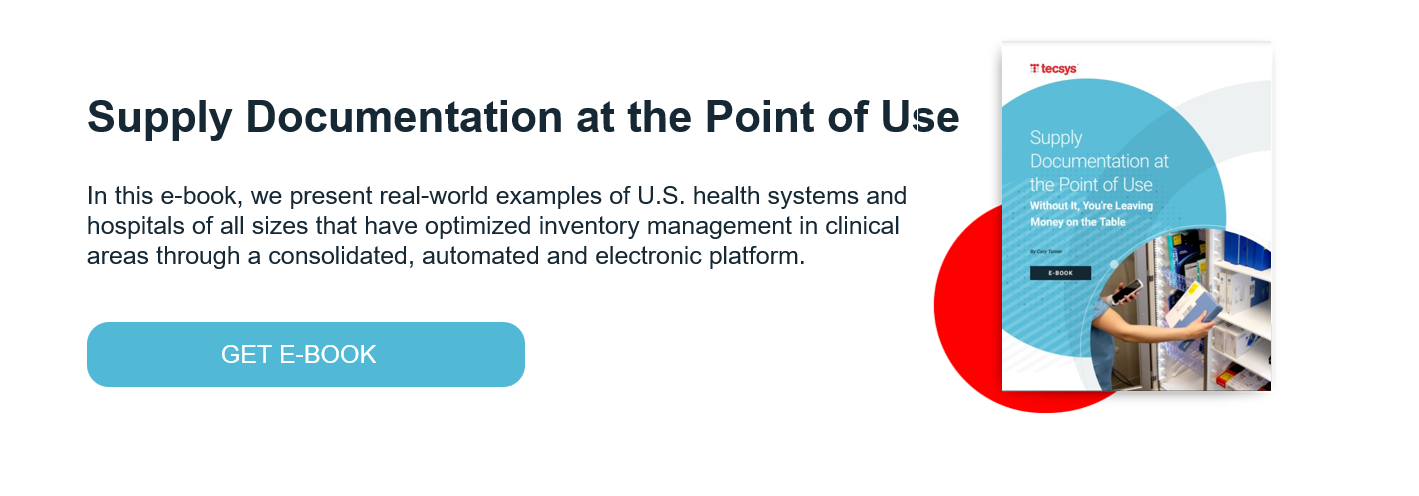Strategic Inventory Control Techniques to Boost Supply Chain Transparency

According to Gartner, the total supply chain cost to serve for a health system averages 37.3% of the total cost of patient care and continues to rise. Health systems and hospital leaders have long recognized that their supply chains are an area of high costs and waste, and this year they are ready to do something about it. The results of a recent PwC survey found 86% of healthcare provider executives are prioritizing their supply chains in 2021, with supply chain transparency being their top priority.
Digital Transformation
The key to transparency is gaining visibility to supplies from the time they enter the healthcare organization to the moment they are used in a procedure and every step in between. This requires overarching inventory control techniques and an intuitive management system. With those in place, the system will automate supply tracking and document where every product is stored and used, from the warehouse to supply closets and shelves to the patient’s bedside.
These inventory control techniques are what Deloitte refers to as a “digital supply network (DSN).” Deloitte’s analysts note how healthcare supply chains are transforming from “a static sequence to a dynamic, interconnected system” that integrates “information from many different sources and locations to drive the physical act of production and distribution.”
Through this approach a healthcare organization can not only boost efficiency, cut costs and reduce waste, but also gain real-time insights into supply inventory for data-driven decision making.
Proven Healthcare Inventory Control Techniques
In our new e-book, we detail how five healthcare organizations each implemented an enterprise-wide inventory management platform, integrated with supply chain and clinical systems (e.g., ERP, EHR) with point-of-use (POU) data capture technologies (e.g., RFID, two-bin Kanban system) to achieve end-to-end supply chain clarity and control.
Betty Jo Rocchio, MS, RN, CRNA, CENP, senior vice president and chief nursing officer for Mercy, one of the health systems featured in the e-book, comments on their supply chain optimization initiative, which is delivering an estimated $21.2M in savings.
“The missing piece of the puzzle was a truly consolidated software platform that marries the clinical with the back office, eliminating those performance gaps that exist when one system ends and the next one picks up where that one left off.”
Start Saving
The e-book examines inventory control techniques that helped optimize three key clinical POU areas: cath lab, perioperative and nursing units. Here are some examples of savings achieved by the five healthcare organizations, which range from a 295-bed regional medical center to one of the top five largest U.S. health systems:
- Improved inventory utilization: $4.7M in supply savings by improving inventory utilization.
- Greater charge capture: $13M in supply savings by optimizing charge capture with products documented at POU.
- Reduced waste: $761K in loss avoidance (expired and waste reduction).
- Clinical time savings: 37% less time spent by nurses on supply chain activities, 5,800+ hours returned to clinical care.
- More accurate billing: $400K per month reduction in supply cost billing corrections.
To optimize productivity, healthcare organizations need to transform their supply chain systems into an integrated and connected network. The implementation of data capture technologies and a point of use system are the inventory control techniques needed to help achieve significant cost savings with improved supply visibility across the entire health system.




